Snow-studded granite spires pierced a Windex-blue Sierra sky. At their base, a bright turquoise lake shimmered in the sunlight. We threw off our heavy packs and plopped down on the warm white granite, grateful to be done hiking for the day.
Northern California’s Big Pine Lakes is one of the most beautiful hikes on the planet, and Melanie and I were lucky enough to score permits to backpack there this July. Read on for a full trip report, plus ALL the details on snagging permits, packing and prepping for this bucket list adventure.
Backpacking Big Pine Lakes July 12-14
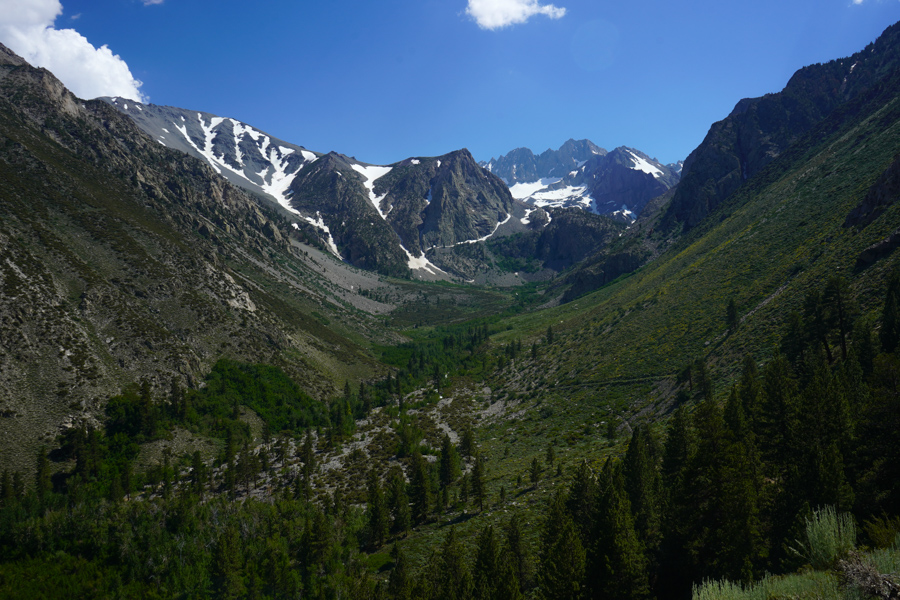
The Big Pine Lakes trailhead is 20 minutes from the small town of Big Pine, California, ~6 hours from the San Francisco Bay Area and ~5 hours from Los Angeles. See the AllTrails map here.
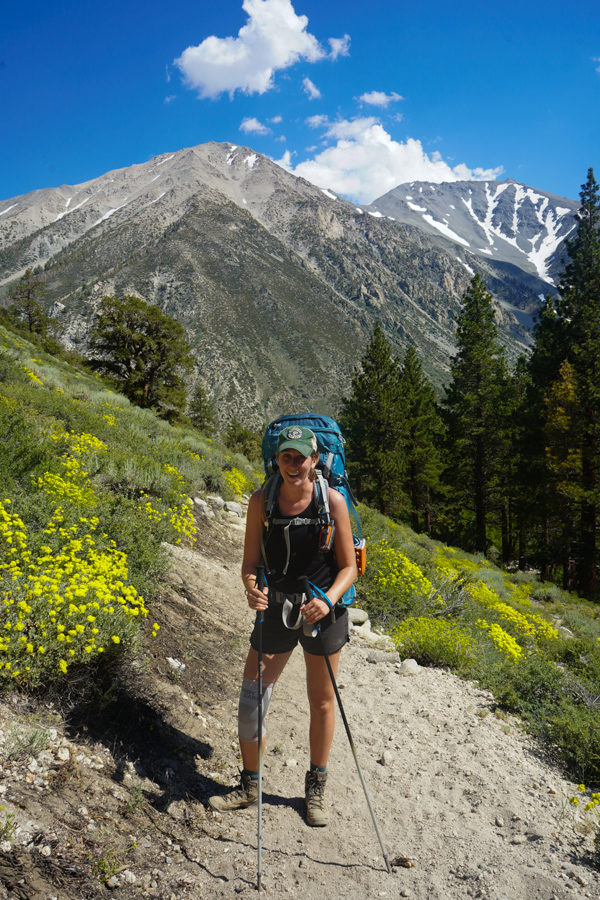
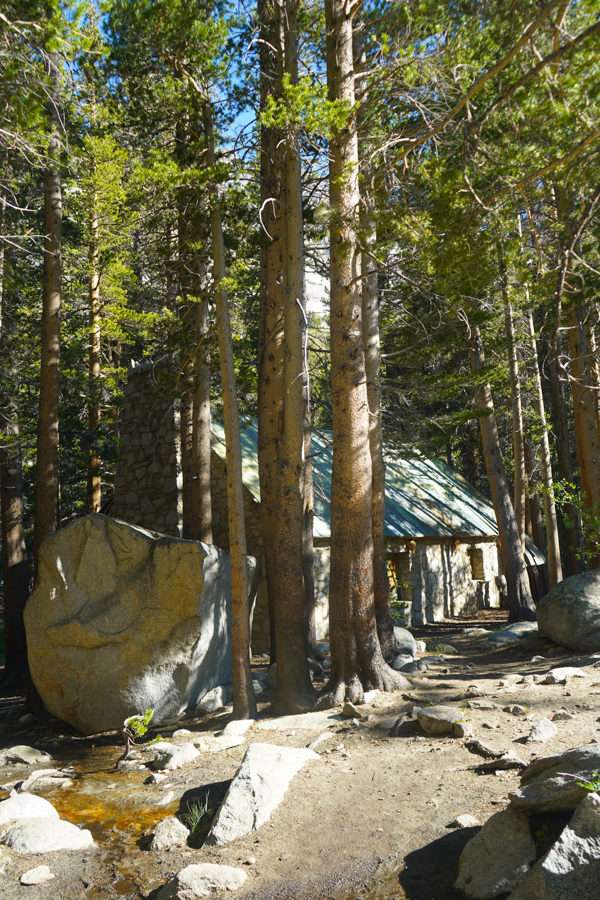
The hike in was long, hot, exposed, steep, and buggy. We passed a few small waterfalls and a Forest Service cabin once owned by Lon Chaney (of “Werewolves of London” fame, a song Melanie had never heard. I, meanwhile, had “Awoooo” in my head the whole trip! :P)

We set up camp near gorgeous Second Lake, the most Instagram-famous of Lakes 1-7 and a respectable 5.5 mostly uphill miles from the trailhead. Unfortunately, the mosquitoes came, too, and we shut ourselves in the tent before sunset just to avoid them.
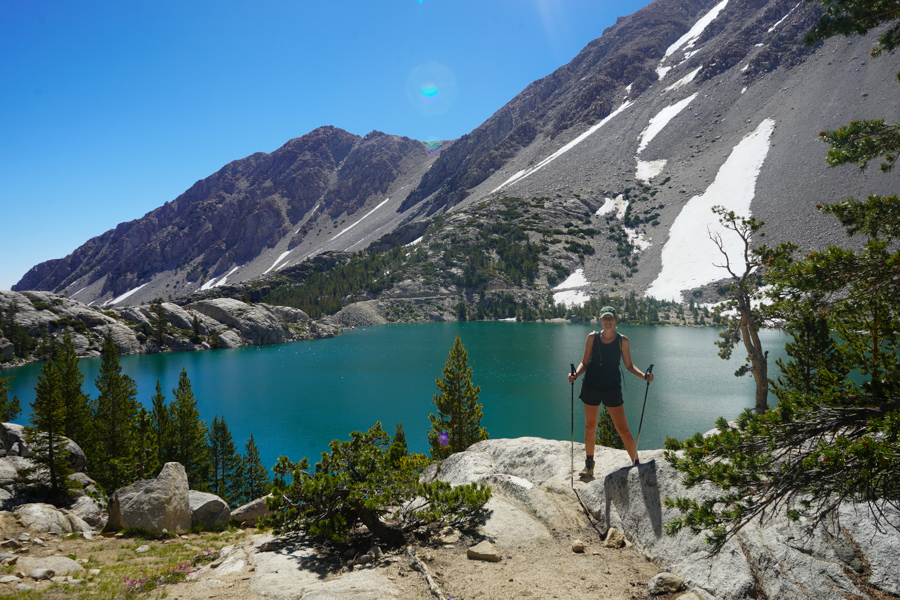
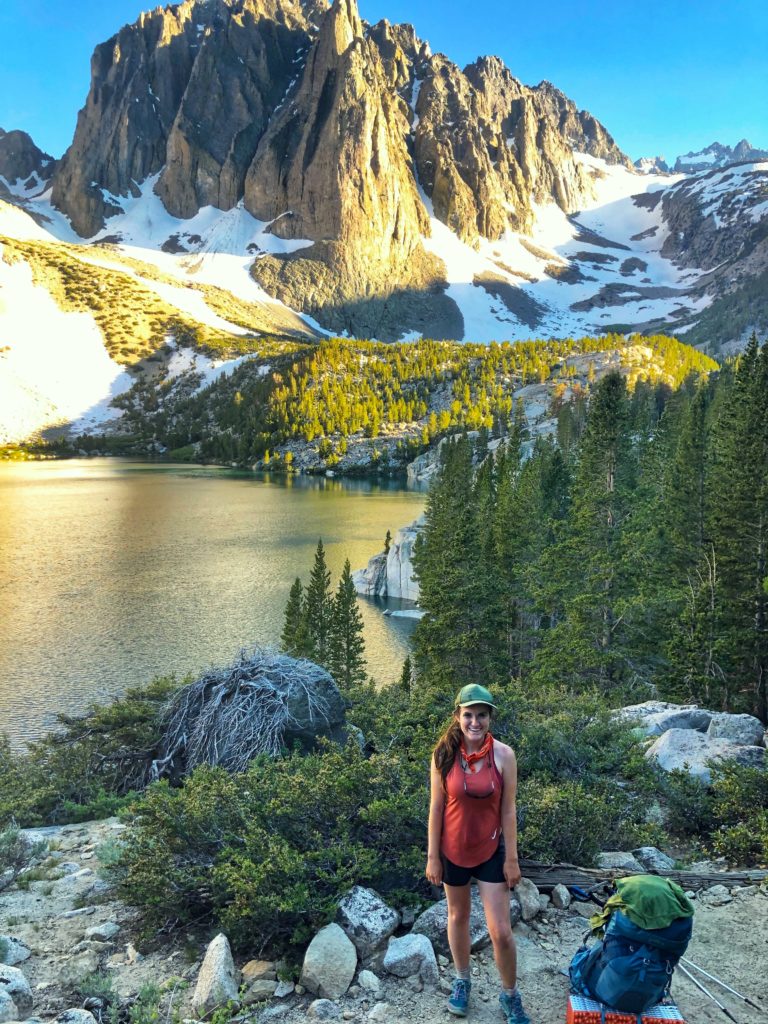
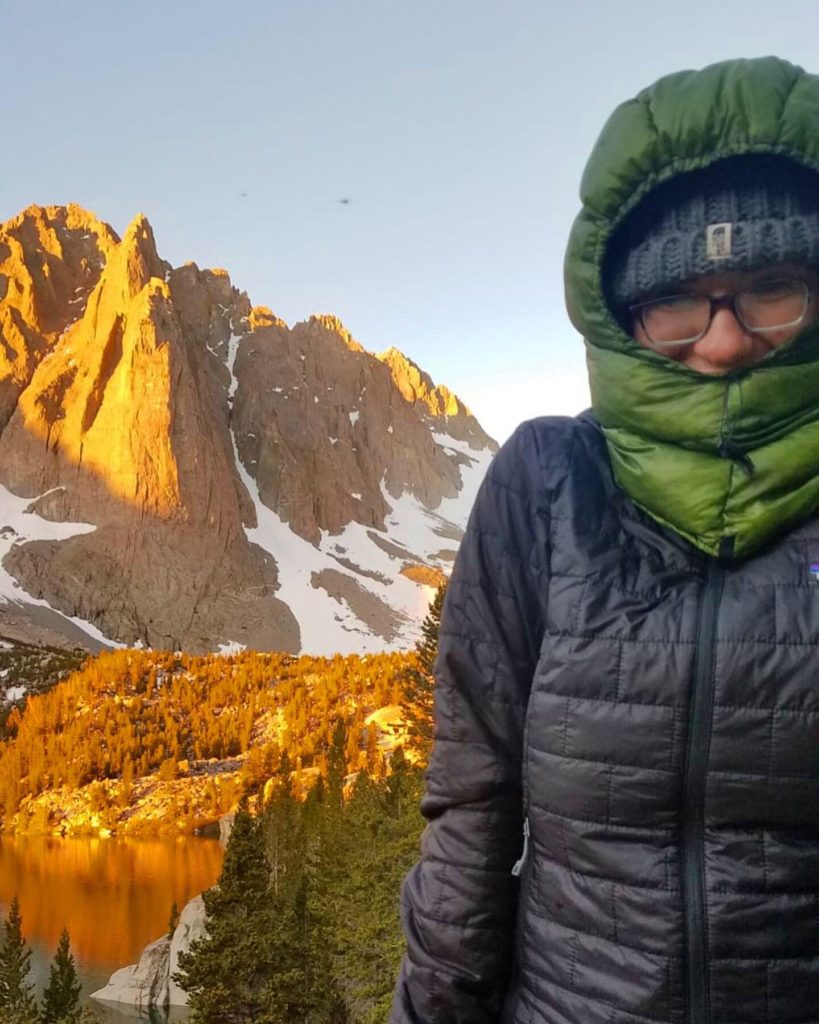
The next day we woke up slowly, savoring coffee and backpacking breakfast burritos as the first rays of golden light slipped over Temple Crag.
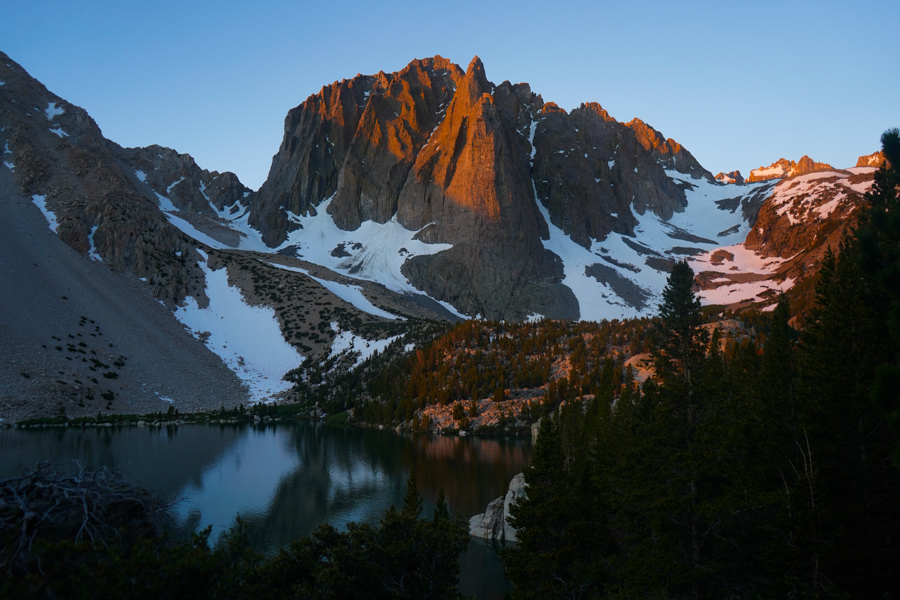
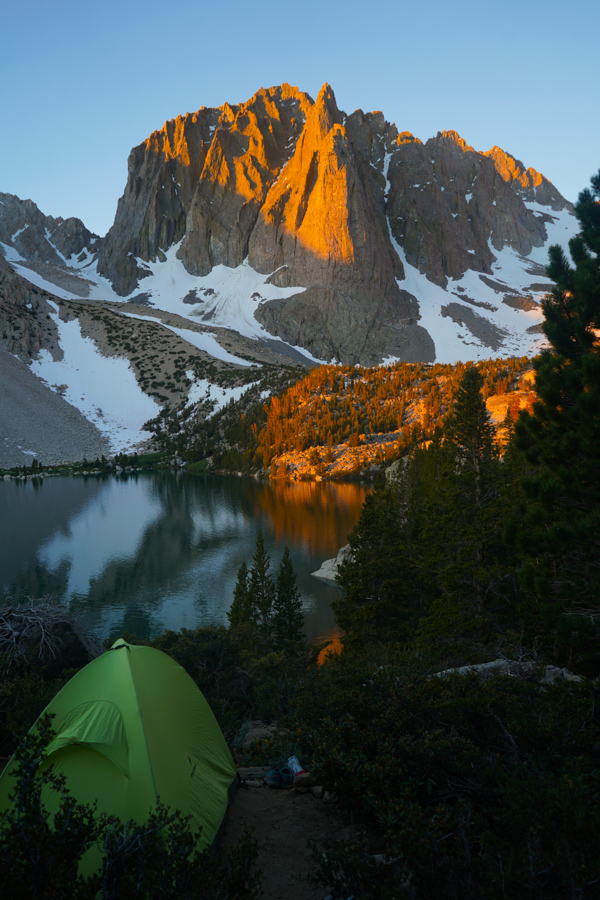
We then packed cold lunches and set out on a day hike to the farther lakes, leaving our tent and heavy bear cans behind.
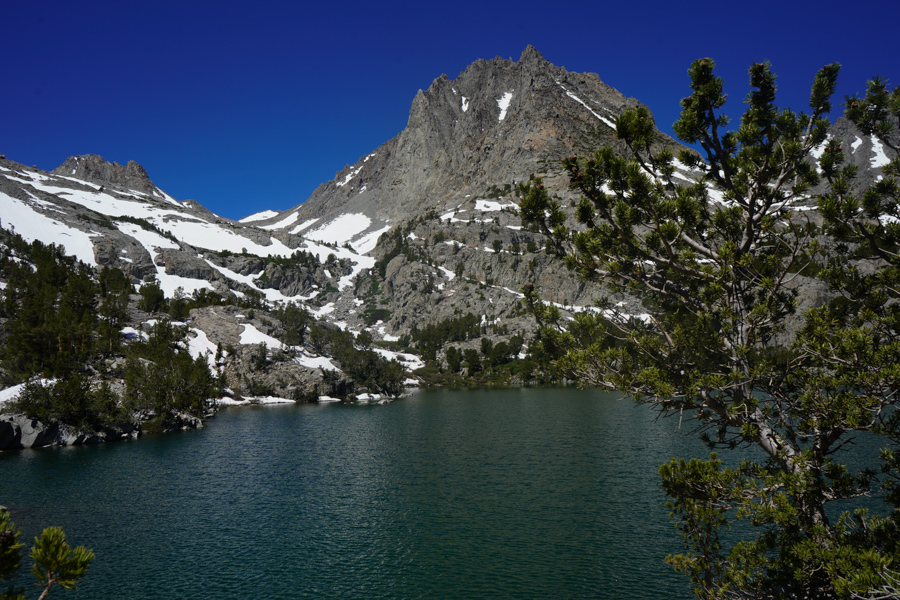
Third and Fourth Lakes were lovely, but the highlight for us was Fifth Lake: a glittering gem of alpine beauty dotted with rock islands that we had to ourselves for hours, despite it being a summer Friday.
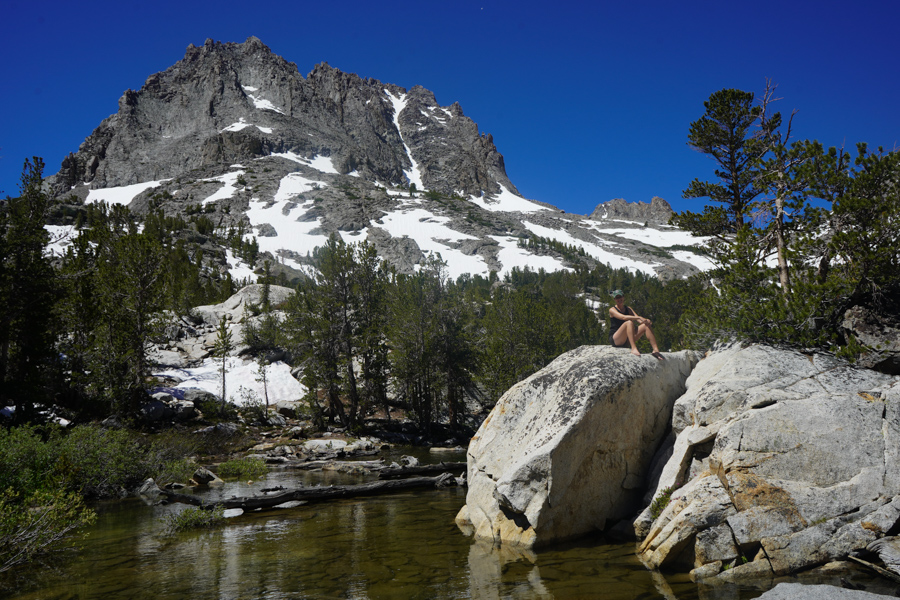
We napped on the warm granite, ate tuna wraps with Triscuits, and repeated variants of “THIS IS [PERFECT/AMAZING/BEAUTIFUL/INSERT SUPERLATIVE ADJECTIVE HERE]” to each other as we gazed into the deepest blue sky I’ve ever seen.
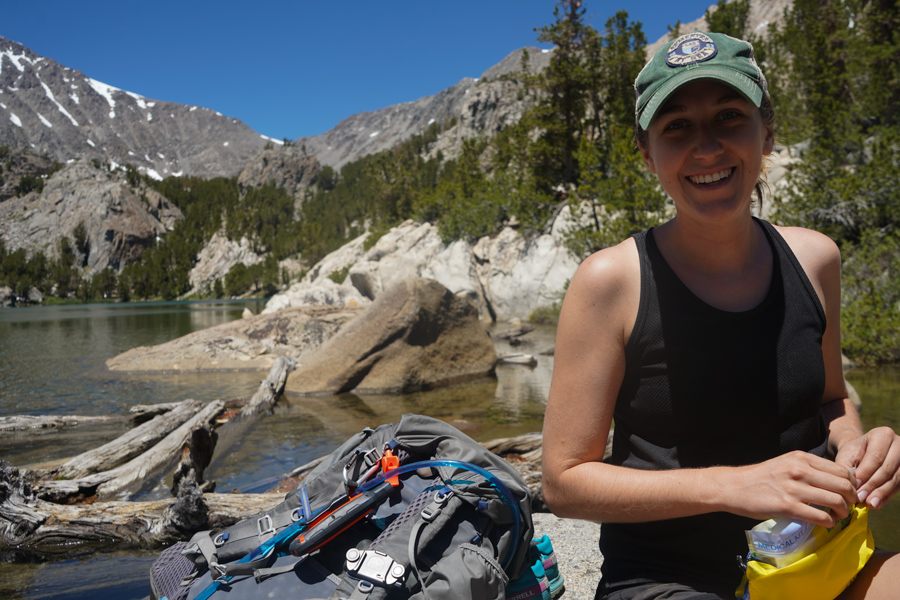
You can hike on to Sixth and Seventh Lakes and Palisade Glacier from there, but we opted to take it “easy” and loop back to camp instead, passing pretty Black Lake along the way. I’m glad we did, or we would have missed the perfect campsite!
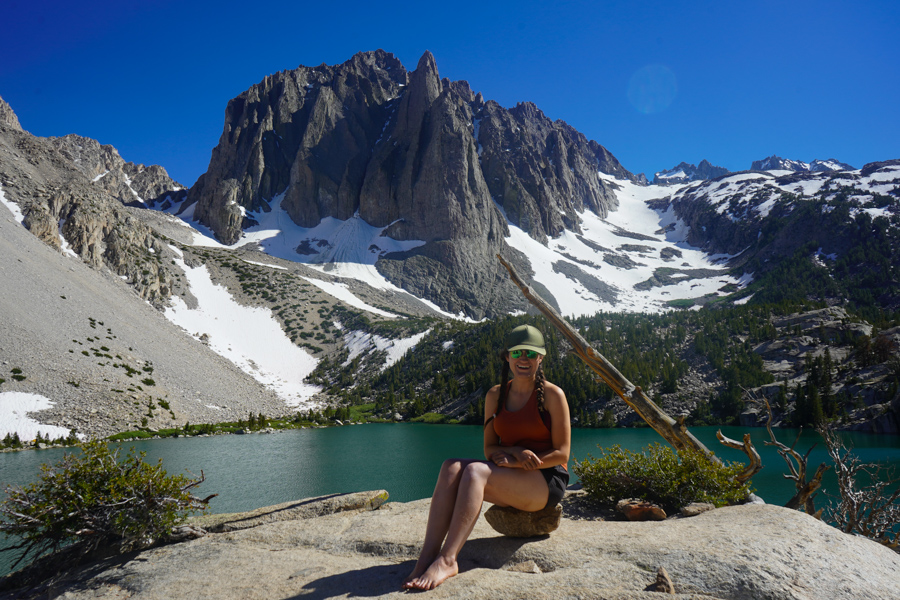
“THE” campsite at Big Pine Lakes sits on a granite shelf above Second Lake with a spectacular front-and-center view of Temple Crag. It’s just far enough off the trail to be private and boasts a small “kitchen”/reading area in addition to room for 1-2 tents. While there are no bad sites at Second Lake, this is by far the best one — and the most highly coveted, as judged by the number of backpackers who trickled in after us and were disappointed to find it occupied. We took turns moving gear from our first night’s campsite a quarter mile down the trail.
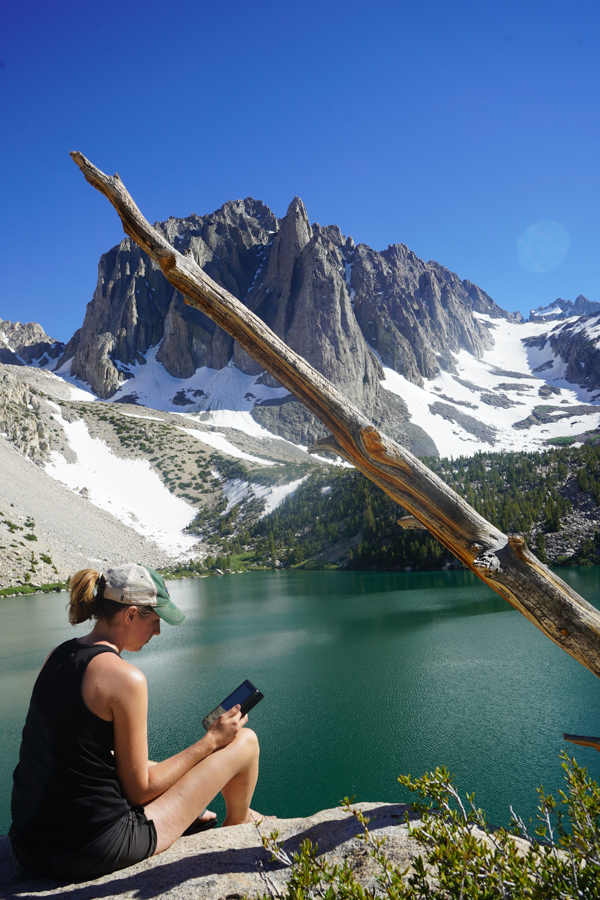
The move was well worth it: the bugs weren’t nearly as bad as our first night’s campsite closer to the water, and our tent views only got better. The only signs that we weren’t alone were a few neon-colored tents lit up in the distance.
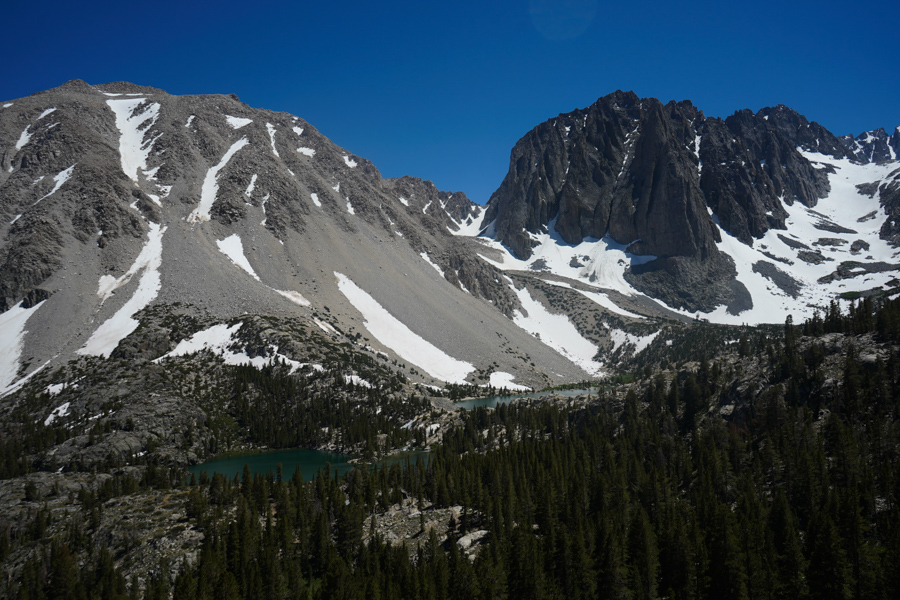

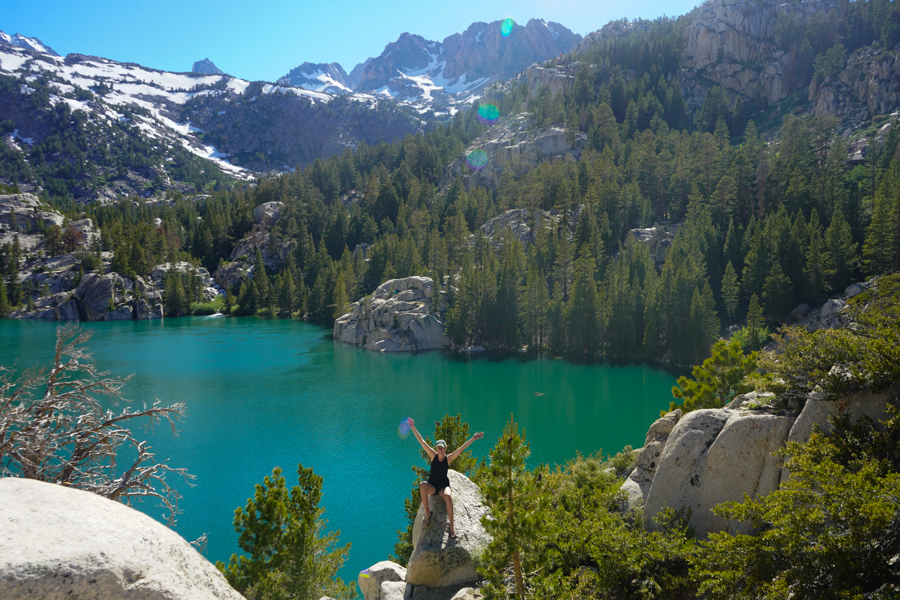
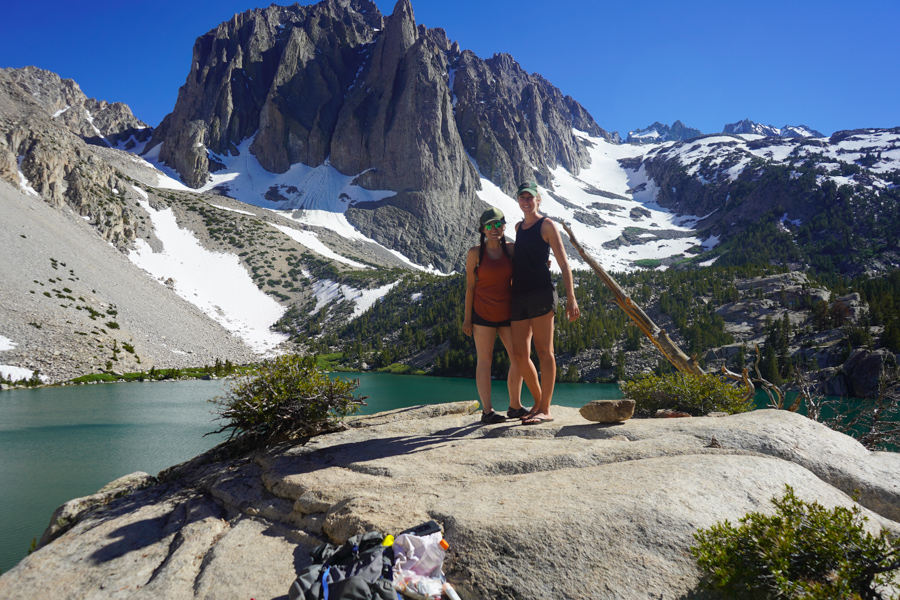
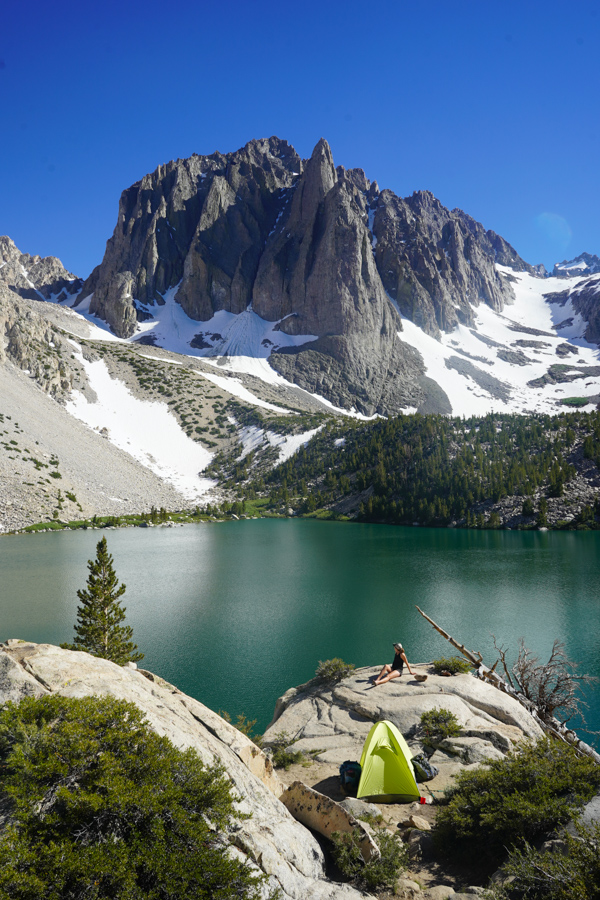
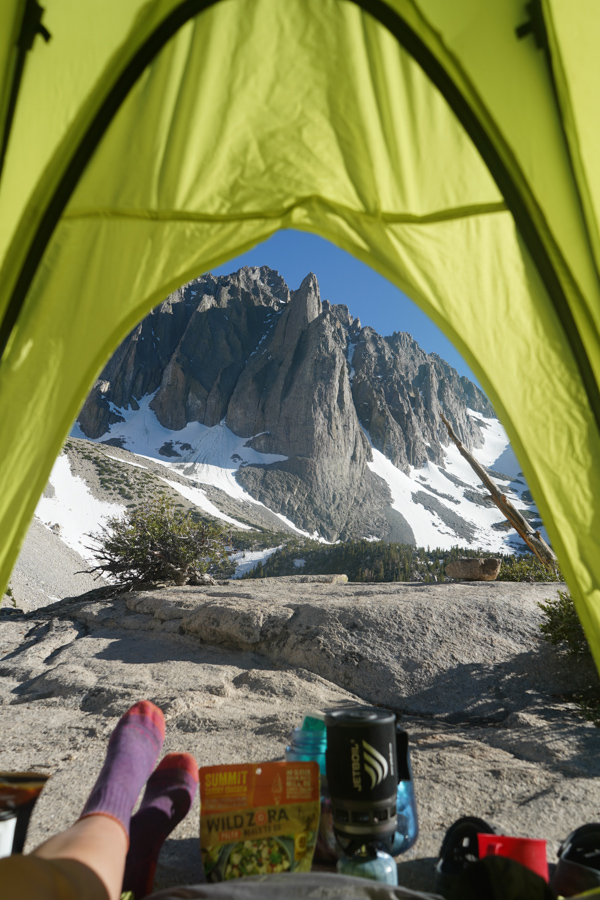
The second morning was leisurely, too, but we hiked fast downhill knowing that brunch —and beer, and milkshakes!— awaited us on the other end.
We made new friends with “General Phil” & co, who returned to the trailhead from their week-long fishing trip around the same time we did and shared cheers and cold beers with us in the parking lot. Then it was on to Bishop for breakfast skillets and chocolate malts, the brilliant blues of Second Lake still blazing in our brains.
Cheers to a fabulous adventure!
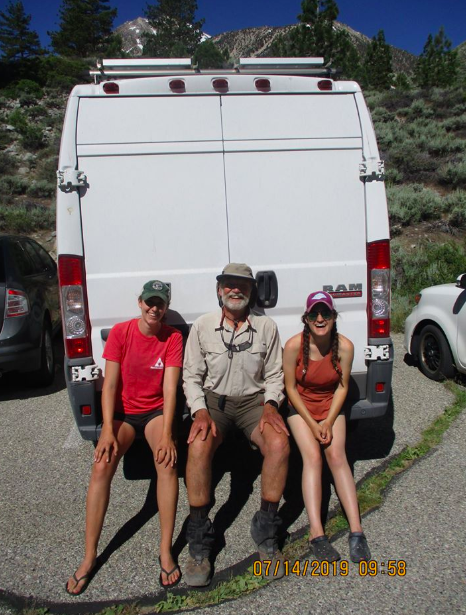
How to Score Permits for Big Pine Lakes
There are 2 ways to get permits for Big Pine: online and walkup.
15 permits are available online beginning 6 months before the permit date, while 10 are reserved for walkups beginning at 11am the day before the permit date.
Reserving permits online
To book permits in advance, visit Recreation.gov 6 months before the day you want to hike and search for Inyo National Forest. Select the number of permits you want, then your entry trailhead: JM23 – Big Pine Creek North Fork. (Make sure you select JM23, the North Fork, and not JM 24, the South Fork. Only JM23 is for trips to Second Lake and beyond.)

Permits open on a rolling basis at 7am Pacific time exactly 6 months in advance. That means permits for June 20 go on sale December 20, permits for June 21 go on sale December 21, permits for July 1 go on sale January 1, and so on.
There’s one exception to the 6-month rule, though. If you book a trip for two or more nights, you can book the entire trip 6 months from the first night. So if you want permits for June 20-22, you can book the whole trip starting June 20, even though June 22 is more than 6 months away.
If you’re hoping to backpack Big Pine Lakes on a weekend in July, August, or September, get out your calendar and set an alarm for 7:50am 6 months before the first day of your backpacking trip. Summer weekends sell out quick, sometimes even in the first few minutes they’re available.
Getting permits via walkup
If you can’t snag a permit in advance —or just don’t want to plan that far ahead— there are still 10 permits per day reserved for walkups. Those 10 first-come, first-served permits are released at 11am the day before your hike at any of the Inyo National Forest permit issuing stations:
Eastern Sierra Visitor Center
located at the Junction of Highway 395 and State Route 136, south of Lone Pine, CA 93545
White Mountain Ranger Station
798 N. Main Street
Bishop, CA 93514
Mammoth Lakes Welcome Center
2500 Main Street
Mammoth Lakes, CA 93546
Mono Basin Scenic Area Visitor Center
North of Lee Vining on Hwy 395
Lee Vining, CA 93541
Melanie snagged our July 2019 permits via walkup from the White Mountain Ranger Station in Bishop. Big Pine Lakes was actually our Plan B(eautiful), as our original route to Dusy Basin was still buried in snow in mid-July. Looking at the AllTrails reviews from that weekend, I’m very glad we went to Big Pine Lakes instead!
Do you need a permit to day hike to Big Pine Lakes?
No, you don’t need a permit to day hike to Big Pine Lakes. It’s 11 miles roundtrip to Second Lake (the most scenic/Instagram-famous one) or 14 miles roundtrip to all seven lakes. But if you can, I highly recommend backpacking.
Melanie and I camped two nights at Second Lake, giving us plenty of time to revel in the scenery, read in the sun by the lake, and day hike to the other five lakes sans packs. That also meant we got to enjoy not one but two glorious sunrises over Temple Crag and a leisurely lunch at Fifth Lake on the second day, which ended up being our favorite part of the trip.
When is the best time of year to visit Big Pine Lakes?
Snow lingers on the trail to Big Pine Lakes well into June, making July and August the most popular times to hike. (And, therefore, the hardest times to get a permit.)
The brilliant teal color of the lake is caused by glacial melt that only deepens in hue as the year goes on, meaning August and September are better than June or July even if the trail is clear.
September and early October are also great times to hike, though you risk colder temperatures and early-season snow. The aspens along the trail turn gold in late October-early November, so if you’re prepared for colder evening temperatures that might be the best time of all to visit.
Is Big Pine Lakes dog friendly?
Yes!
Juno was at Camp Grandma for this trip, but we saw a few super-cute doggos. Keep in mind that the first half of the trail is totally exposed and hot, so start early if you’re bringing your furry friend. Check out our favorite hiking and backpacking gear for dogs here!
Is a bear canister required for Big Pine Lakes?
Bear canisters aren’t required for trips in Inyo National Forest, including Big Pine Lakes, though they are strongly recommended.
There aren’t many places to safely hang a bear bag near the granite campsites above Second Lake, so for your own peace of mind I’d bring one anyway. The BearVault BV500 holds enough smellies for a 2-night trip with two people, while the smaller BV450 is great for one.
What to pack for a backpacking trip to Big Pine Lakes
My standard overnight backpacking gear list is here on LighterPack, including weights and shopping links for most items. (Want more info on specific items/general tips on packing for a backpacking trip? Let me know in the comments!)
I recommend plenty o’ bug spray, lotsa sunscreen, and a lightweight mosquito head net like this. If the bugs are bad, you’ll be super thankful you brought it! And if they’re not, it’s still super light and you won’t regret having carried it.
Other items we were grateful to have on this trip were the Garmin InReach (for texting with loved ones back home,) trekking poles (for previously injured knees,) and our JetBoil stove and Wild Zora meals (for yummy camp breakfasts and dinners).
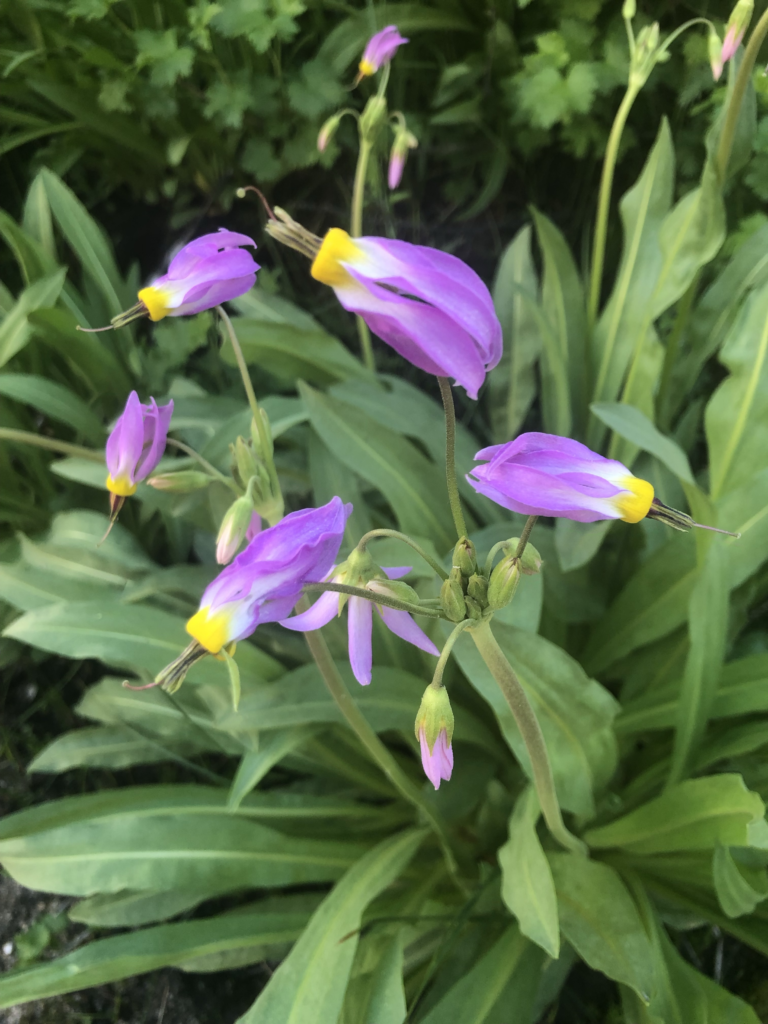
If you have any questions, memories, or pro tips about Big Pine Lakes, drop them in the comments below!
Planning a longer trip to the Eastern Sierra? Don’t miss the Bristlecone Pines, Alabama Hills, Manzanar Historic Site, or the Hot Spring Highway near Mammoth Lakes!

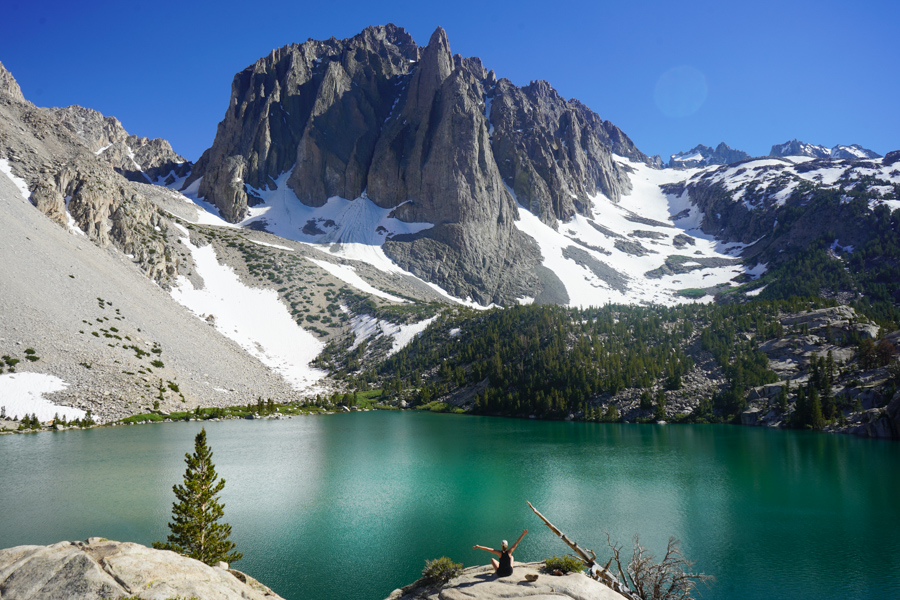
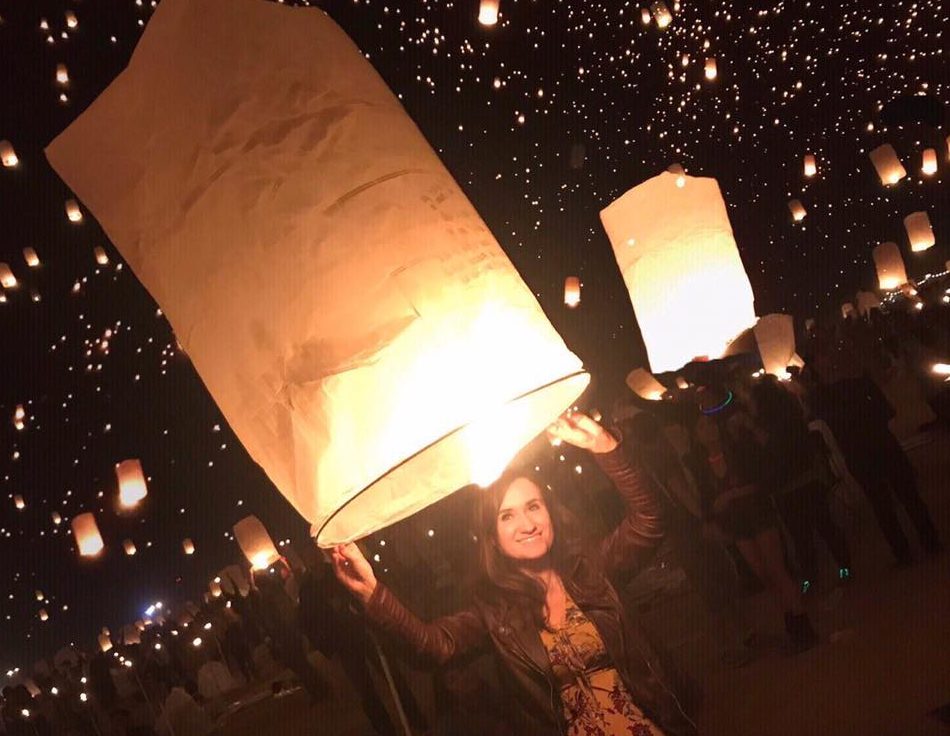
16 Comments
Leave your reply.